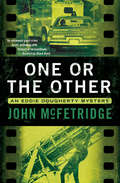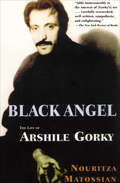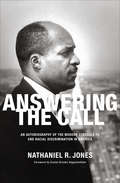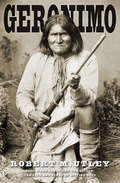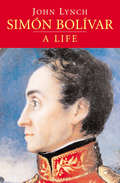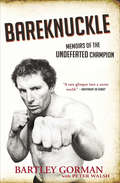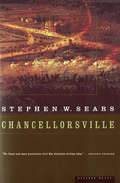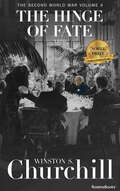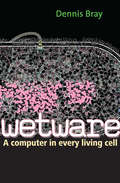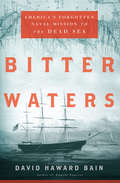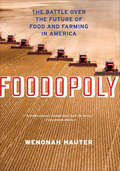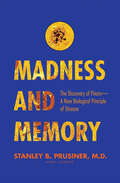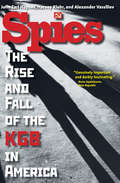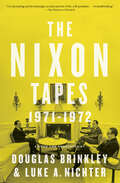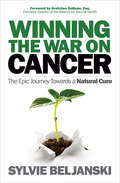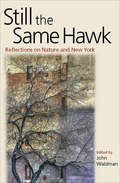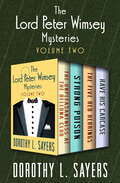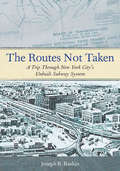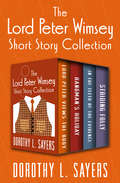- Table View
- List View
One or the Other: An Eddie Dougherty Mystery (The Eddie Dougherty Mysteries #3)
by John McFetridgeThis police procedural set in 1970s Montreal is &“an enjoyable read . . . that immerses readers in a tumultuous period in Canadian history&” (Publishers Weekly). In the weeks before Montreal is to host the 1976 Summer Olympics, the police are bolstering security to prevent another catastrophe like the &’72 games in Munich. But it isn&’t tight enough to stop nearly three million dollars being stolen in a bold daytime Brink&’s truck robbery. As the high-profile heist continues to baffle the police, Constable Eddie Dougherty gets a chance to prove his worth as a detective on another case. He&’s assigned to assist in a Quebec suburb investigating the deaths of two teenagers returning from a rock concert across the Jacques Cartier Bridge. Were they mugged and thrown over the side? Or was it a murder-suicide? With tensions running high in the city and his career at stake, Dougherty is about to confront one of the most challenging cases of his life.
Black Angel: The Life of Arshile Gorky
by Nouritza MatossianA biography of the Armenian painter that &“adds immeasurable to the interest of [his] art . . . Carefully researched, well written, [and] enlightening&” (The New York Review of Books). In this first full-scale biography, Nouritza Matossian charts the mysterious and tragic life of Arshile Gorky, one of the most influential painters of the twentieth century. Born Manoug Adoian in Armenia, he survived the Turkish genocide of 1915 before coming to America, where he posed as a cousin of the famous Russian author Maxim Gorky. One of the first abstract expressionists, Gorky became a major figure of the New York School, which included de Kooning, Rothko, Pollock, and others. But after a devastating series of illnesses, injuries, and personal setbacks, he committed suicide at the age of forty-six. In Black Angel, arts journalist Matossian analyzes Gorky&’s personal letters, as well as other new source material. She writes with authority, insight, and compassion about the powerful influence Gorky&’s life and Armenian heritage had upon his painting.
Answering the Call: An Autobiography of the Modern Struggle to End Racial Discrimination in America
by Nathaniel R. Jones&“Jones, a trailblazing African American judge, delivers an urgently needed perspective on American history . . . [A] passionate and informative account&” (Booklist, starred review). Answering the Call is an extraordinary eyewitness account from an unsung hero of the battle for racial equality in America—a battle that, far from ending with the great victories of the civil rights era, saw some of its signal achievements in the desegregation fights of the 1970s and its most notable setbacks in the affirmative action debates that continue into the present in Ferguson, Baltimore, and beyond. Judge Nathaniel R. Jones&’s groundbreaking career was forged in the 1960s: As the first African American assistant US attorney in Ohio; as assistant general counsel of the Kerner Commission; and, beginning in 1969, as general counsel of the NAACP. In that latter role, Jones coordinated attacks against Northern school segregation—a vital, divisive, and poorly understood chapter in the movement for equality—twice arguing in the pivotal US Supreme Court case Bradley v. Milliken, which addressed school desegregation in Detroit. He also led the national response to the attacks against affirmative action, spearheading and arguing many of the signal legal cases of that effort. Answering the Call is &“a stunning, inside story of the contemporary struggle for civil rights . . . Essential reading for understanding where we are today—underscoring just how much work is left to be done&” (Vernon E. Jordan Jr., civil rights activist). &“A forthright testimony by a witness to history.&” —Kirkus Reviews
Geronimo (The Lamar Series in Western History)
by Robert M. UtleyThis &“meticulous and finely researched&” biography tracks the Apache raider&’s life from infamous renegade to permanent prisoner of war (Publishers Weekly). Notorious for his ferocity in battle and uncanny ability to elude capture, the Apache fighter Geronimo became a legend in his own time and remains an iconic figure of the nineteenth century American West. In Geronimo, renowned historian Robert M. Utley digs beneath the myths and rumors to produce an authentic and thoroughly researched portrait of the man whose unique talents and human shortcomings swept him into the fierce storms of history. Utley draws on an array of newly available sources, including firsthand accounts and military reports, as well as his geographical expertise and deep knowledge of the conflicts between whites and Native Americans. This highly accurate and vivid narrative unfolds through the alternating perspectives of whites and Apaches, arriving at a more nuanced understanding of Geronimo&’s character and motivation than ever before. What was it like to be an Apache fighter-in-training? Why was Geronimo feared by whites and Apaches alike? Why did he finally surrender after remaining free for so long? The answers to these and many other questions fill the pages of this authoritative volume.
Simón Bolívar: A Life
by John LynchThe &“impeccably researched, uncommonly honest, and . . . very well written&” biography of the nineteenth century Venezuelan military and political leader (Alvaro Vargas Llosa, New Republic). Simón Bolívar was a revolutionary who freed six South American countries from Spanish Imperial rule, an intellectual who argued the principles of national liberation, and a statesman who led the governments of Venezuela, Gran Colombia, Bolivia, and Peru. His life, passions, and battles were woven into Spanish American culture almost as soon as they happened. In the first major English-language biography of &“The Liberator&” in half a century, John Lynch draws on extensive research to understand Bolívar&’s life in the context of his own society and times, and to explore his remarkable and enduring legacy. Simón Bolívar illuminates the man&’s inner world, the dynamics of his leadership, his power to command, and his modes of ruling the diverse peoples of Spanish America. The key to his greatness, Lynch concludes, was his ability to inspire people to follow him beyond their immediate interests, in some cases through years of unremitting struggle. Encompassing Bolívar&’s entire life and his many accomplishments, this is the definitive account of a towering figure in the history of the Western hemisphere. &“[A] masterly new biography.&” —Noam Lupu, San Francisco Chronicle
Bareknuckle: Memoirs of the Undefeated Champion
by Peter Walsh Bartley GormanAs bareknuckle fighting is poised to steal MMA&’s spotlight, its greatest modern-day champion tells his story of rising to the top in the brutal sport. Steeped in the tradition of his Irish Traveller ancestry, Bartley Gorman also embraced its dangerous subculture: bareknuckle fighting. Though it gave birth to boxing as we know it today, the sport has remained underground—and illegal in most developed countries. But that didn&’t stop Gorman from rising through the prize-fighting ranks of Great Britain and Ireland and staying undefeated for twenty years. Now, through Gorman&’s thrilling memoir, readers get a front row view of the punches exchanged in back parking lots and fair grounds, the gritty characters populating the fight circles, and the hazards facing a sought after champion. &“A rare glimpse into a secret world,&” Bareknuckle celebrates one man&’s mastery of fighting in its purest form and heralds the rebirth of one of the oldest combat sports in history (The Independent on Sunday). &“Every page shines. A tremendous book.&” —Traveller Magazine &“Well-written and interesting.&” —Boxing News
Chancellorsville
by Stephen W. SearsA new look at the Civil War battle that led to Stonewall Jackson&’s death: A Publishers Weekly Best Book of the Year and &“tour de force in military history&” (Library Journal). From the award-winning, national bestselling author of Gettysburg, this is the definitive account of the Chancellorsville campaign, from the moment &“Fighting Joe&” Hooker took command of the Army of the Potomac to the Union&’s stinging, albeit temporary, defeat. Along with a vivid description of the experiences of the troops, Stephen Sears provides &“a stunning analysis of how terrain, personality, chance, and other factors affect fighting and distort strategic design&” (Library Journal). &“Most notable is his use of Union military intelligence reports to show how Gen. Joseph Hooker was fed a stream of accurate information about Robert E. Lee&’s troops; conversely, Sears points out the battlefield communications failures that hampered the Union army at critical times . . . A model campaign study, Sears&’s account of Chancellorsville is likely to remain the standard for years to come.&” —Publishers Weekly &“The finest and most provocative Civil War historian writing today.&” —Chicago Tribune Includes maps
Life to the Years: Living a Robust Life After Heart Disease
by Michael James Michael RanvilleA cardiologist and his patient tell a true story of surviving and thriving, in a book both informational and inspirational. After Michael Ranville&’s emergency treatment, his cardiologist told him: Given the nature and severity of your heart attack, you should no longer be with us. Statistically, you are dead. Now, the doctor and patient unite to present a unique story for the benefit of heart patients—or anyone who has a heart. A generation ago, heart patients rarely defied the statistical category that dictated a sedentary existence and an abbreviated life. But this is the tale of one patient who didn&’t die. He continued to live, refused to take up membership in that statistical category. Under the thirty-year care of Dr. Michael James and a forward-leaning cardiac community, Michael Ranville and a host of other determined heart patients created a new statistical category. Life to the Years is also the lively, anecdote-laden story of a tenacious and resourceful cardiologist who helped Ranville seize control of life after heart disease. The authors illustrate the development of life-saving technology with fascinating stories that underscore the human element that still drives medicine. Life to the Years does not shy from the controversial, from the uncomfortable. A confrontation with mortality is the inevitable companion of heart disease. For the authors, the significance of dignity when faced with death—for both family and patient—is far from a theoretical discussion. This is a memoir that will both enlighten and encourage, and offer a behind-the-scenes look at a successful doctor-patient relationship.
The Hinge of Fate (Winston S. Churchill The Second World Wa #4)
by Winston S. ChurchillThe British prime minister recounts battles from Midway to Stalingrad, and how the Allies turned the tide of WWII: &“Superlative.&” —The New York Times The Hinge of Fate is the dramatic account of the Allies&’ changing fortunes. In the first half of the book, Winston Churchill describes the fearful period in which the Germans threaten to overwhelm the Red Army, Rommel dominates the war in the desert, and Singapore falls to the Japanese. In the span of just a few months, the Allies begin to turn the tide, achieving decisive victories at Midway and Guadalcanal, and repulsing the Germans at Stalingrad. As confidence builds, the Allies begin to gain ground against the Axis powers. This is the fourth in the six-volume account of World War II told from the unique viewpoint of the man who led his nation in the fight against tyranny. The series is enriched with extensive primary sources, as we are presented with not only Churchill&’s retrospective analysis of the war, but also memos, letters, orders, speeches, and telegrams, day-by-day accounts of reactions as the drama intensifies. Throughout these volumes, we listen as strategies and counterstrategies unfold in response to Hitler&’s conquest of Europe, planned invasion of England, and assault on Russia, in a mesmerizing account of the crucial decisions made as the fate of the world hangs in the balance. &“No memoirs by generals or politicians . . . are in the same class.&” —The New York Times
Wetware: A Computer in Every Living Cell
by Dennis Bray&“A beautifully written journey into the mechanics of the world of the cell, and even beyond, exploring the analogy with computers in a surprising way&” (Denis Noble, author of Dance to the Tune of Life). How does a single-cell creature, such as an amoeba, lead such a sophisticated life? How does it hunt living prey, respond to lights, sounds, and smells, and display complex sequences of movements without the benefit of a nervous system? This book offers a startling and original answer. In clear, jargon-free language, Dennis Bray taps the findings from the discipline of systems biology to show that the internal chemistry of living cells is a form of computation. Cells are built out of molecular circuits that perform logical operations, as electronic devices do, but with unique properties. Bray argues that the computational juice of cells provides the basis for all distinctive properties of living systems: it allows organisms to embody in their internal structure an image of the world, and this accounts for their adaptability, responsiveness, and intelligence. In Wetware, Bray offers imaginative, wide-ranging, and perceptive critiques of robotics and complexity theory, as well as many entertaining and telling anecdotes. For the general reader, the practicing scientist, and all others with an interest in the nature of life, this book is an exciting portal to some of biology&’s latest discoveries and ideas. &“Drawing on the similarities between Pac-Man and an amoeba and efforts to model the human brain, this absorbing read shows that biologists and engineers have a lot to learn from working together.&” —Discover magazine &“Wetware will get the reader thinking.&” —Science magazine
Authentic Health: The Definitive Guide to Losing Weight, Feeling Better, Mastering Stress, Sleeping Well Every Night, & Enjoying a Sense of Purpose
by Gus VickeryA straightforward guide to holistic health and wellness that gets at the root of weight gain, anxiety, insomnia, and other chronic conditions. Millions of Americans are locked in ongoing battles with obesity, diabetes, insomnia, depression, anxiety, persistent headaches, and other chronic health conditions. And while many treatments are aimed at temporary relief from symptoms, few actually address the root causes. In Authentic Health, Guz Vickery, MD, offers a holistic approach to better health and genuine relief. In this easy-to-use roadmap, Vickery lays out a comprehensive program addressing the habits and conditions that drive many of the most common chronic health problems. Covering nutrition and physical activity, Vickery also provides essential information and advice on stress-management, sleeping well, and cultivating a sense of purpose in your life. More than just another weight loss guide, Authentic Health is a powerful manifesto for reclaiming good health and living well.
Bitter Waters: America's Forgotten Naval Mission to the Dead Sea
by David Haward Bain&“An intriguing, thorough study of a little-known scientific expedition to the Dead Sea by a mid-19th-century U.S. Navy lieutenant&” (Kirkus Reviews). With customary depth and insight, David Haward Bain illumines the United States&’s nineteenth-century exploration of the Holy Land. To lead the expedition, the navy tabbed William Francis Lynch, an officer eager to enter the esteemed yet dangerous field of Victorian exploration. Like many of his successful contemporaries, Lynch was well read and possessed an independent nature, but a man who also preferred organization to chaos, and with a character that tended toward the obsessive. The expedition would force a juxtaposition of the ancient world with the modern, as the world&’s newest power attempted an exhaustive scientific study of the waters of the cradle of civilization. Beyond its fascinating topic, Bitter Waters is full of broad allusions from the period that demonstrate Bain&’s deep understanding of America, and serve to make the work appealing for general scholars and lay readers. Heroically engaging unfamiliar terrain, hostile Bedouins, and ancient mysteries, Lynch and his party epitomize their nation&’s spirit of Manifest Destiny in the days before the Civil War. &“An engrossing narrative of the expedition that richly positions the mission&’s incidents within Lynch&’s Western perspective on the Near East. Wonderfully realized, Bain&’s account will enthrall seekers of history off the beaten path.&” —Booklist (starred review) &“David Haward Bain, author of Empire Express, paints a vivid picture of the ambitious, visionary seafarers and their bold adventure . . . Bitter Waters captures this fascinating moment in American history.&” —History Book Club (official selection)
Foodopoly: The Battle Over the Future of Food and Farming in America
by Wenonah Hauter&“A meticulously researched tour de force&” on politics, big agriculture, and the need to go beyond farmers&’ markets to find fixes (Publishers Weekly). Wenonah Hauter owns an organic family farm that provides healthy vegetables to hundreds of families as part of the Community Supported Agriculture (CSA) movement. Yet, as a leading healthy-food advocate, Hauter believes that the local food movement is not enough to solve America&’s food crisis and the public health debacle it has created. In Foodopoly, she takes aim at the real culprit: the control of food production by a handful of large corporations—backed by political clout—that prevents farmers from raising healthy crops and limits the choices people can make in the grocery store. Blending history, reporting, and a deep understanding of farming and food production, Foodopoly is a shocking, revealing account of the business behind the meat, vegetables, grains, and milk most Americans eat every day, including some of our favorite and most respected organic and health-conscious brands. Hauter also pulls the curtain back from the little-understood but vital realm of agricultural policy, showing how it has been hijacked by lobbyists, driving out independent farmers and food processors in favor of the likes of Cargill, Tyson, Kraft, and ConAgra. Foodopoly shows how the impacts ripple far and wide, from economic stagnation in rural communities to famines overseas, and argues that solving this crisis will require a complete structural shift—a change that is about politics, not just personal choice.
Madness and Memory: The Discovery of Prions—A New Biological Principle of Disease
by Stanley B. PrusinerIn this &“utterly fascinating&” science memoir, the Nobel Prize–winning author chronicles his revolutionary discovery of a major cause of brain diseases (The New York Times). In 1997, Stanley B. Prusiner received the Nobel Prize in Physiology or Medicine for his research on devastating brain diseases. That he was the award&’s sole recipient was entirely appropriate. His struggle to identify the agent responsible for scrapie and mad cow disease in animals, and Creutzfeldt-Jakob disease in humans, had been waged largely alone, and in some cases, in the face of strenuous opposition. In Madness and Memory, Prusiner recounts the journey to his remarkable discovery of prions—infectious proteins that replicate and cause disease, but surprisingly contain no genetic material. Along the way, he sheds light on the world of contemporary science and the meticulousness and perseverance it requires. Through his telling, the agony and triumph of years of research comes to life, along with fascinating portraits of fellow scientists racing to make breakthrough discoveries. Prusiner&’s hypothesis, once considered heresy, now stands as accepted science and provides a path toward conquering such pervasive scourges as Alzheimer&’s, Parkinson&’s, Lou Gehrig&’s, and others diseases. &“Madness and Memory is the story of one of the most important discoveries in recent medical history, and it is also a vivid and compelling portrait of a life in science.&” —Oliver Sacks, MD, neurologist and author of Hallucinations
Spies: The Rise and Fall of the KGB in America
by John Earl Haynes Harvey Klehr Alexander Vassiliev&“This important new book . . . based on archival material . . . shows the huge extent of Soviet espionage activity in the United States during the 20th century&” (The Telegraph). Based on KGB archives that have never been previously released, this stunning book provides the most complete account of Soviet espionage in America ever written. In 1993, former KGB officer Alexander Vassiliev was permitted unique access to Stalin-era records of Soviet intelligence operations against the United States. Years later, Vassiliev retrieved his extensive notebooks of transcribed documents from Moscow. With these notebooks, John Earl Haynes and Harvey Klehr have meticulously constructed a new and shocking historical account. Along with valuable insight into Soviet espionage tactics and the motives of Americans who spied for Stalin, Spies resolves many long-standing intelligence controversies. The book confirms that Alger Hiss cooperated with the Soviets over a period of years, that journalist I. F. Stone worked on behalf of the KGB in the 1930s, and that Robert Oppenheimer was never recruited by Soviet intelligence. Uncovering numerous American spies who never came under suspicion, this essential volume also reveals the identities of the last unidentified American nuclear spies. And in a gripping introduction, Vassiliev tells the story of his notebooks and his own extraordinary life.
The Nixon Tapes: 1971–1972 (With Audio Clips)
by Douglas Brinkley, Luke A. NichterAn enhanced edition of this &“fascinating&” collection of White House transcripts, including audio clips of some of the most newsworthy conversations (San Francisco Chronicle). This &“treasure trove&” of transcripts documents two years of Richard Nixon&’s presidency and takes you directly inside the White House, through the famous—and infamous—Nixon White House tapes that reveal for the first time the president uncensored, unfiltered, and in his own words (TheBoston Globe). President Nixon&’s voice-activated taping system captured every word spoken in the Oval Office, Cabinet Room, other key locations in the White House, and at Camp David—3,700 hours of recordings between 1971 and 1973. Yet less than five percent of those conversations have ever been transcribed and published. Now, thanks to historian Luke Nichter&’s massive effort to digitize and transcribe the tapes, the world can finally read an unprecedented account of one of the most important and controversial presidencies in US history. This volume of The Nixon Tapes offers a selection of fascinating scenes from the period in which Nixon opened relations with China, negotiated the SALT I arms agreement with the Soviet Union, and won a landslide reelection victory. All the while, the growing shadow of Watergate and Nixon&’s political downfall crept ever closer. The Nixon Tapes provides a never-before-seen glimpse into a flawed president&’s hubris, paranoia, and political genius—&“essential for students of the era and fascinating for those who lived it&” (Kirkus Reviews, starred review).
So You Want to Start a Business: The 7 Step Guide to Create, Start & Grow Your Own Business
by Ingrid ThompsonGet it right—from the start! &“Entrepreneurship is like a roller coaster ride, exhilarating yet terrifying . . . Allow Ingrid to guide you&” (Adam Franklin, bestselling author of Web Marketing That Works). Often, people leap into starting a business to pursue their passion without fully realizing what they&’ve gotten themselves into. They may love what they do—but the financial and administrative side of the business ends up being more than they bargained for. So You Want to Start a Business takes you through the seven essential elements required to create a thriving business. With examples, exercises, and invaluable guidance, Ingrid Thompson provides a practical guide to unleashing one&’s inner entrepreneur. With over twenty years&’ experience helping people create successful businesses, Ingrid knows exactly how to help people decide what kind of business to start—and start out on the right foot.
Winning the War on Cancer: The Epic Journey Towards a Natural Cure
by Sylvie Beljanski&“A fascinating combination of personal story and details on the suppression of holistic cancer(and other disease) therapies&” (Ann E. Fonfa, president, The Annie Appleseed Project). President Nixon signed the National Cancer Act in 1971, declaring a war on the disease. Nearly fifty years and several billion dollars later, it looks like we have lost the battle. Or have we? What if a natural solution had been there all along, just overlooked by the pharmaceutical industry? When a new, natural, and non-toxic way to address cancer is being discovered, it is a game changer that does not go unnoticed in the scientific community. But instead of being hailed and embraced, it is fiercely opposed by prominent scientists with strong ties to the pharmaceutical industry, and the might of the government is called to the rescue. As a result, we are losing the war on cancer. Mirko Beljanski, PhD, one of the first green molecular biologists, was called upon by former French president François Mitterrand to treat his prostate cancer, allowing him to reach his second term in office, but upon his death, Beljanski became the subject of relentless persecution aimed at wiping out this information. In Winning the War on Cancer, his daughter Sylvie Beljanski outlines her journey of learning about her father&’s discoveries, and ensuring his legacy is available to all those struggling with the disease today. &“Whether a current patient or caregiver, a survivor, a researcher, an author/speaker, or a physician, the information in this book is groundbreaking, exciting, and essential to know . . . Sincere, captivating, poignant, and educational.&” —Annie Brandt, founder and president of Emerita, Best Answer for Cancer Foundation
Apollo Confidential: Memories of Men On the Moon
by Lukas VigliettiThe inside stories of the Apollo program and the live of astronauts, as told to the author by the men themselves—with a forward by astronaut Charlie Duke. Between 1969 and 1972, twelve people walked on the surface of the Moon. Twelve others flew over its majestic surface. They were the sons of ordinary individuals. But they believed anything was possible―and they proved it to the entire world. Fascinated by these men—heroes such as Alan Shepard, Neil Armstrong, Buzz Aldrin, and many others—airline pilot Lukas Viglietti personally recorded their testimonies, becoming a close friend and confidant to many of them in the process. Now he shares his exclusive and unprecedented insight into their adventures and the Apollo program overall in Apollo Confidential.
A Plague of Prisons: The Epidemiology of Mass Incarceration in America
by Ernest DruckerThe public health expert and prison reform activist offers &“meticulous analysis&” on our criminal justice system and the plague of American incarceration (The Washington Post). An internationally recognized public health scholar, Ernest Drucker uses the tools of epidemiology to demonstrate that incarceration in the United States has become an epidemic—a plague upon our body politic. He argues that imprisonment, originally conceived as a response to the crimes of individuals, has become &“mass incarceration&”: a destabilizing force that damages the very social structures that prevent crime. Drucker tracks the phenomenon of mass incarceration using basic public health concepts—&“incidence and prevalence,&” &“outbreaks,&” &“contagion,&” &“transmission,&” &“potential years of life lost.&” The resulting analysis demonstrates that our unprecedented rates of incarceration have the contagious and self-perpetuating features of the plagues of previous centuries. Sure to provoke debate and shift the paradigm of how we think about punishment, A Plague of Prisons offers a novel perspective on criminal justice in twenty-first-century America. &“How did America&’s addiction to prisons and mass incarceration get its start and how did it spread from state to state? Of the many attempts to answer this question, none make as much sense as the explanation found in [this] book.&” —The Philadelphia Inquirer
Still the Same Hawk: Reflections on Nature and New York
by John WaldmanThis essay collection draws on natural history, urban ecology, and environmental politics to consider New York City&’s complex relationship to nature. How can a hawk nesting above Fifth Avenue become a citywide phenomenon? Why does a sudden butterfly migration at Coney Island energize the community? What makes the presence of a community garden or an empty lot ripple so differently through the surrounding neighborhood? Is the city an oasis or a desert for biodiversity? Does nature even matter to New Yorkers, who choose to live in a concrete jungle? Still the Same Hawk examines these questions with a rich mix of creative nonfiction that ranges from analytical to anecdotal and humorous. John Waldman&’s sharp, well-crafted introduction presenting dualism as the defining quality of urban nature is followed by compelling contributions from Besty McCully, Christopher Meier, Tony Hiss, Kelly McMasters, Dara Ross, William Kornblum, Phillip Lopate, David Rosane, Robert Sullivan, Anne Matthews, Devin Zuber, and Frederick Buell. Together these pieces capture a wide range of viewpoints, including the myriad and shifting ways New Yorkers experience and consider the outdoors, the historical role of nature in shaping New York&’s development, what natural attributes contribute to New York&’s regional identity, the many environmental tradeoffs made by urbanization, and even nature&’s dark side where &“urban legends&” flourish.
The Lord Peter Wimsey Mysteries Volume Two: The Unpleasantness at the Bellona Club, Strong Poison, The Five Red Herrings, and Have His Carcase (The Lord Peter Wimsey Mysteries)
by Dorothy L. SayersThe British aristocrat and sleuth takes on four more puzzling whodunits in this beloved series from &“one of the greatest mystery story writers&” (Los Angeles Times). A gentleman needs hobbies. For Lord Peter Wimsey—a Great War veteran with a touch of shell shock—collecting rare books, sampling fine wines, and catching criminals are all most pleasant diversions. In these Golden Age whodunits, &“Lord Peter can hardly be spared from the ranks of the great detectives of the printed page&” (The New York Times). The Unpleasantness at the Bellona Club: On Armistice Day, a wealthy general dies in his club, surrounded by fellow veterans—while across town his sister also dies suspiciously, throwing a half-million-pound inheritance into turmoil. Now club member Lord Peter Wimsey must fight an uphill battle to solve the case. Strong Poison: Lord Peter Wimsey comes to the trial of Harriet Vane for a glimpse at one of the most engaging murder cases London has seen in years. There is little doubt the woman will face the hangman. A mildly popular mystery novelist, she stands accused of poisoning her fiancé, a literary author and well-known advocate of free love. But as Lord Peter watches Harriet in the dock, he begins to doubt her guilt—and to fall in love. The Five Red Herrings: In the idyllic village of Kirkcudbright on the Scottish coast, every resident and visitor has two things in common: They either fish or paint (or both), and they all hate Sandy Campbell. So when the painter&’s body is found at the bottom of a steep hill, Wimsey suspects someone&’s taken a creative approach to the art of murder. Have His Carcase: Harriet Vane has gone on vacation to forget her recent murder trial and, more importantly, to forget the man who cleared her name—the dapper, handsome, and maddening Lord Peter Wimsey. But when she finds a dead body on the beach, only the gentleman sleuth can help her solve a murder after all the evidence has washed out to sea.
The Routes Not Taken: A Trip Through New York City's Unbuilt Subway System
by Joseph B. RaskinA fascinating journey into the past—and under the ground—that offers &“an insightful look at the what-might-have-beens of urban mass transit&” (The New York Times). From the day it broke ground by City Hall in 1900, it took about four and half years to build New York&’s first subway line to West 145th Street in Harlem. Things rarely went that quickly ever again. The Routes Not Taken explores the often-dramatic stories behind unbuilt or unfinished subway lines. The city&’s efforts to expand its underground labyrinth were often met with unexpected obstacles—financial shortfalls, clashing political agendas, battles with community groups, and more. After discovering a copy of the 1929 subway expansion map, Joseph B. Raskin began his own investigation into the city&’s underbelly. Here he provides an extensively researched history of the Big Apple&’s unfinished business. The Routes Not Taken sheds light on: *the efforts to expand the Hudson Tubes into a full-fledged subway *the Flushing line, and why it never made it past Flushing *a platform under Brooklyn&’s Nevins Street station unused for more than a century *the 2nd Avenue line—long the symbol of dashed dreams—deferred countless times since the original plans were presented in 1929 Raskin reveals the personalities involved, explaining why Fiorello H. La Guardia couldn&’t grasp the importance of subway lines and why Robert Moses found them old and boring. By focusing on unbuilt lines, he illustrates how the existing system is actually a Herculean feat of countless compromises. Filled with illustrations, this is an enduring contribution to the history of transportation and the history of New York City.
The Lord Peter Wimsey Short Story Collection: Lord Peter Views the Body, Hangman's Holiday, In the Teeth of the Evidence, and Striding Folly (The Lord Peter Wimsey Mysteries)
by Dorothy L. SayersFour volumes of short stories featuring the iconic British aristocrat and sleuth from &“one of the greatest mystery story writers&” (Los Angeles Times). A gentleman needs hobbies. For Lord Peter Wimsey—a Great War veteran with a touch of shell shock—collecting rare books, sampling fine wines, and catching criminals are all most pleasant diversions. In these Golden Age whodunits, &“Lord Peter can hardly be spared from the ranks of the great detectives of the printed page&” (The New York Times). Lord Peter Views the Body: In these early adventures, Lord Peter confronts a stolen stomach, a man with copper fingers, and a deadly adventure at Ali Baba&’s cave, among other conundrums that tax his intellect, humor, acting talent, knowledge of metallurgy, and taste for fine wines. It&’s not easy being a gentleman sleuth, but Lord Peter was born to play the part. Hangman&’s Holiday: Two of the genre&’s most memorable detectives, Lord Peter Wimsey—noble by birth, brilliant by nature—and free-spirited traveling wine salesman Montague Egg, confront menaces from purloined pearls to poisoned port. In the Teeth of the Evidence: In this volume of &“truly remarkable stories,&” a pair of classic Wimsey stories appear alongside five featuring Montague Egg, the eccentric purveyor of wines whose powers of deduction could give His Lordship a run for his money. A handful of other glittering puzzles round out the volume, &“adding much to the already great reputation of Dorothy L. Sayers&” (The New York Times). Striding Folly: Lord Peter confronts land barons, killers, and the terror that comes from raising three young sons. Through it all, his clear thinking never fails him, and he tackles these puzzles with his usual aplomb. He may be a family man now, but like a good wine, a great detective only gets better with age. Ruth Rendell praised Sayers for her &“great fertility of invention, ingenuity and a wonderful eye for detail,&” and P. D. James said, &“She brought to the detective novel originality, intelligence, energy and wit.&” Those same sparkling qualities are on display in these outstanding short stories.
The Miss Silver Mysteries Volume Two: In the Balance, The Chinese Shawl, and Miss Silver Deals with Death (The Miss Silver Mysteries)
by Patricia WentworthThe British governess-turned-sleuth solves three of her most intriguing cases, in this &“timelessly charming&” series (Charlotte MacLeod). Retired governess and teacher Maud Silver has found a new calling: private detection. With her knitting needles and fondness for Tennyson, she may seem an unlikely sleuth, but Scotland Yard would be lost without her. &“Patricia Wentworth has created a great detective in Miss Silver, the little old lady who nobody notices, but who in turn notices everything&” (Paula Gosling, author of the Jack Stryker Mysteries). In the Balance: On a train back to London, Miss Silver meets a frightened new bride. Lisle Jerningham has fled her home after overhearing a seemingly sinister conversation. Her husband&’s first wife died in an apparent accident, and the resultant infusion of cash saved his family home. Now he&’s broke again. Will he attempt a second convenient mishap? The Chinese Shawl: Actress Tanis Lyle may lack professional training, but her natural charisma seems to hypnotize all who meet her. The rising star has just finished filming her first motion picture. Unfortunately, it will turn out to be her last. Who did Tanis fail to charm? The answer could lie with a distant cousin and a long-standing family feud. Miss Silver Deals with Death: In wartime London, the once grand Vandeleur House has been divided into flats, its glorious façade now concealing a nest of intrigue. When one inhabitant reports she&’s being blackmailed by another, Miss Silver is brought in to sort out the suspects from the residents, which include a woman who lost her fiancé after their ship was struck by a Nazi torpedo and a sleepwalking maid with a curious past.
